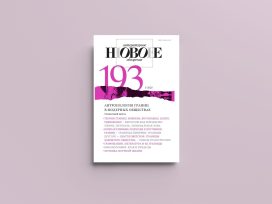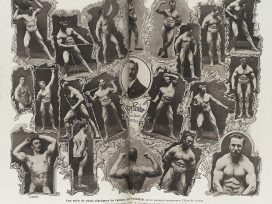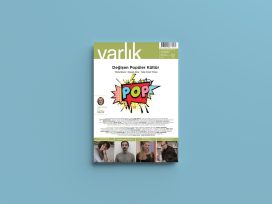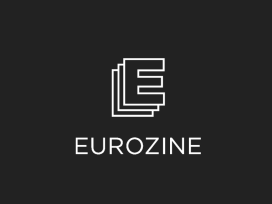1.
Film, frame, photograph in particular.
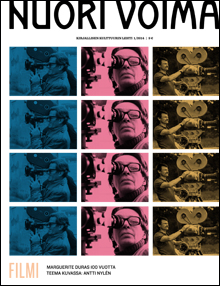 If a metaphor literally carries over or transfers, where does a film carry or even derail one to? Why is it so supple in its penetration of other medias, in its effect on our customs of how to experience, how to show or seem like something?
If a metaphor literally carries over or transfers, where does a film carry or even derail one to? Why is it so supple in its penetration of other medias, in its effect on our customs of how to experience, how to show or seem like something?
The film itself is a unique sort of object. It seems to capture eras lost in darkness, witchcraft and alchemy. As a sparkling darkness it is something surreal you can only encounter in the speeches of mystics. It is hunches of colours, blurred shapes drawn against brightness.
It is a sliver of something but what?
Of time, of the optic subconscious, it’s been said.
It’s been said that the film would reveal what hides in sight.
Yet it is completely concrete. A film can be held and, while holding it, one may realize that it isn’t necessarily eternal. Instinctively one begins to protect it. Even though it isn’t particularly frail.
Occasionally, the film behaves like the blue of the horizon, where the nostalgia it awakens will often fall as well. In that field, the natures of different tenses will reflect one another like the ocean and the sky. The recent that stretches to the present begins to become detached. Remains of the past are found in the future: a black and white photograph, upon which the world’s movement has disintegrated. What remains are silvery bones, contrast medium, soil.
Rebecca Solnit: Movies are made out of darkness as well as light. The frames are divided by darkness, the darkness enables a moving image to emerge from separate pictures. Without the darkness, the only thing visible would be a wavering brightness. A half-hour of the film’s duration is made up entirely of darkness.
I grew up in a place where the effects of films and stills were visible everywhere. The latter glimmered in movie posters, pictures were cut out as collectibles, you could even buy them in record stores. Then digitalization shifted the centre of gravity. And as the centre of gravity shifted, light started to behave differently. Movement that seemed immaterial appeared, swept and changed the surfaces of frames almost constantly.
There are other borderlines to be considered, for instance, the world before and after the colour photograph. In monochrome, people and their surroundings can settle harmoniously. To reach that balance in a colour photograph demands such profound arrangement of circumstances that the effect is claustrophobic instead of harmonious. It’s no coincidence that in a cyberpunk literary classic, the protagonist’s eyes have been altered to see the surrounding metropolis as a black-and-white movie.
As the equipment developed, most of its processes were hidden away, but during the pioneering stages of photography, all sorts of strange things were reflected back into the surrounding reality. Take the absurd rise in the price of eggs at the end of the nineteenth century for example, when egg yolk was an essential ingredient for a certain type of emulsion.
The demanding, manual handling of light-sensitive glass plates had a special romance to it all of its own, as did the logistic challenges presented by a shutter speed of several minutes. When that effort resurfaces in the twenty-first century, it’s altered by nostalgia. If one is to take only five photographs a day and everything happens too fast for the technology used, then one will necessarily think about questions of definition and framing in a completely different way.
A quick glance at films, and how scenes in old movies seem both premeditated and coincidental, due to the fact that film material costs made reshoots impossible.
Sometimes absence, maybe because of its rarity, strengthens the essence of photographs. Maurice Blanchot lived to see the eye’s century from beginning to the end, but no photographs remain of him. Libération was published on 14 November 2013 without photographs. Empty frames appeared in their stead, forcing one to acknowledge the (threatened) state of photojournalism. Ironically, this also reminded us of how a news item’s worth is measured by the extent of its illustrations.
Or maybe that issue of Libération suggested that the ubiquity of illustrations dissolves them into a kind of white noise, blank screens, regardless of the information they carry. An impression of pausing and concentrating would follow, like some kind of old habit. Although it might well be that the digital photograph isn’t even intended as a permanent “mirror with a memory”, but more like a surprising arrangement of reality: a moment, its uniqueness, is noticed, it’s captured so that that uniqueness would exist as a kind of suggestion, so the idea of a moment or pause could be understood or even remembered.
Another angle: photographs are taken so that we could experience the present as nostalgic, as if already watching it from the future, from inside a memory where relations between things are no longer clear. The photograph is thereby, in a way, a guarantee of the fact that not everything can be preserved, something must be lost, something altered, meanings and names forgotten.
Photographs are constantly present in Marcel Proust’s À la reserche du temps perdu, but they never revive an involuntary memory, nor do they lead to happiness experienced where two time zones meet. They only strengthen what’s already remembered from the past by putting an end to it.
Let us stop for a moment. Eadweard Muybridge proved in his photographic studies of animals’ movements (1877-78) that the traditional way of drawing a galloping horse in art was wrong.
August Rodin disagreed: the paintings were correct from the spectator’s viewpoint, since time never stops in reality. Instead, ever since Myron’s discus thrower, different phases of movement have been captured in images that appear to be static.
The basis of film is not stopping but something that, in itself, will not transfer to the pixels of digital recording, for instance. Something existed that radiated the photons, which left an undeniable mark on the light-sensitive material. Some literally physical features of the object are now in the film. This is the photograph’s other characteristic, isolated by Roland Barthes in Camera Lucida.
But some of the options are suggested by Susan Derges’ use of light-sensitive surfaces under the clear water of a river. The moon draws something that never existed, by shining through the water’s current.
In the end, all questions relating to film may be contradictory. Film starts to act as a metaphor for a truth that is always in the process of stabilizing itself, denying and correcting itself.
2.
1917, wartime’s melancholic reality. Two sisters manage to photograph fairies. The negatives are said to be untouched, “there was something in front of the lens that hasn’t been interfered with since.”
It isn’t clear whether we can make any sort of assumption about the event of photographing based on this statement alone, but for many it begins to signify the authenticity of the photographs. Arthur Conan Doyle, for example, believed in these photographs and used them to prove the existence of spiritual beings (The Coming of the Fairies, 1922).
Later, the sisters revealed their trick: the fairies had been pictures of cocottes, cut out from magazines and flown through the air by strings.
They continue to state, however, that one of the photographs is authentic. The claim is astounding but gradually their belief begins to appear sincere.
A possible explanation is that the photograph was created by double exposure and partly by accident, which is why the sisters don’t remember taking it. Finally, the film acts as evidence as well. We haven’t framed this photograph, there’s a fairy in it, so fairies must exist.
Max Ernst, who has worked with the irrational, noticed that Gustave Doré’s illustrations, the woodcarvings in light reading matter and the newspaper illustrations, all have something in common: the objects are presented in a similar light, from a similar distance and angle. Elements from these pictures could be cut out and rearranged into a new picture. This led to the creation of views of a world where a lion-headed ragman assembles the remains of a dwarf-woman in the grey anti-space of a side alley, or a ringleader and a boldly dressed acrobat torture a Biedermeier-armchair in a nineteenth-century ballroom.
The enchantment of these pictures is based on the way the monochrome is perceived: the eye accepts them as “reality”, seemingly real, even with all their joins visible. Max Ernst created four collage novels based on this effect. The material of which they are made is like infected shots of something we fear is real.
1760, Tiphaigne de la Roche, a fragment from the novel Giphantie. The narrator is presented with a chemical process that resembles film technology and is suitable for attaching scenes in fantastical circumstances. Its greatest application, a gallery that displays the world in all its diversity, is shown to him.
The idea was replicated at least twice since. The Family of Man exhibition in 1955 was curated and later made into a book by Eduard Steichen. The project portrayed what people look like in different cultures, ages and social classes around the world. The other case is Sebastião Saldago’s Genesis (2013), shot during the course of several years, featuring pristine locations from around the globe: untouched landscapes and aborigines that haven’t (yet) been modified by modern man.
Photographs from the nineteenth century show people who haven’t yet become accustomed to the camera, haven’t been conditioned by its gaze. They look different.
1939, the year of photography’s centenary. Paul Valéry proposes that as the technology spread, literature too had to accept the consequences of photography. For instance, the question “very well but can it be shot?” opens up at least four points of departure for literary invention:
1) The bond between realism and credibility, which excludes, for example, once and for all the kind of medieval speculation on the appearance of “savages” found in publications such as The Travels of Sir John Mandeville;
2) The bond between realism, optics and the bizarre that makes the everyday seem strange due to extremely detailed depiction inspired by photography (e.g. nouveau roman);
3) A kind of fantasy that evades the challenge the question poses entirely through indifference or exaggerated indifference (cf. Italo Calvino’s Our Ancestors trilogy or Cosmicomics);
4) A kind of fantasy that seeks inspiration in the photograph and uses it to reinforce the unreal that it sometimes hints at (the Loch Ness monster, flying saucers, ghosts).
The fifth, and perhaps a completely separate, possibility arises from the experiences that film technology suggests in terms of the use of language. The most obvious example here is probably time moving backwards in Kurt Vonnegut’s Slaughterhouse-Five (1969), as the houses in Dresden re-emerge from the rubble and the bombs withdraw into the stomachs of the reversing planes.
3.
Clearly a film isn’t always a single take, but do the metaphors attached to it also hold true for the series of takes that constitute the movie? According to Barthes, cinematic time erases the experience of “this once was”. It is replaced by a conditioned reality, where the symbolism that binds events and people incorporates, for example, the bitten nails or the wrinkles around the eyes that match the grain of the faded timber wall in the background. In a movie, the details don’t trigger or enable dreaming. If a camera (or a language) does pick them up, they turn into symbols, motives or flaws, like the wristwatches that actors playing Roman soldiers forgot to remove before filming began.
The filming event is uncontrollable: there is always something in the shot that wasn’t meant to be, something that can’t be controlled, which evades the intended meaning. Barthes called it punctum, something that sticks out of the picture, through its intended meaning and straight at me. And that’s it: it is personal. Even if I pointed it at someone else, it wouldn’t necessarily create a similar experience of enchantment or astonishment.
There’s also more common manifestations of detail. Daniel Arrasse outlines two categories in his study Le Détail (1992). Some of the details in a work are created consciously, some come to be perceived later in the finished work.
Perception creates something new.
Details account for why nothing is ever finished.
Film, in addition to making the world known and posing sociological regularities, also includes a store of details. It cherishes the possibility of singularity in the picture and the receiver alike. It is something that revokes the (too) common.
There is something that is only mine, only for me.
There is something that can’t be transmitted to me, something that is only yours.
In some ways, the digital camera strengthens the qualities connected with the capturing moment of film. It captures everything as well, it is even more revealing than film, since most of the pictures intended for social use only acknowledge the front of the picture, the intended target, as if nothing else existed. So the web is full of pictures young people have taken in order to look as if their girlfriends or boyfriends took them – but the shiny backgrounds show that they are holding their camera phones themselves, they’re alone in the room.
A biographeme: my head settles itself on two-dimensional surfaces deformed in a way that causes anxiety. Sometimes I wonder if someone can be photogenic. That someone can possess a charisma that becomes especially apparent when photographed.
Don DeLillo’s novel White Noise (1985) contains an episode concerning the Most Photographed Barn in America. It is the superlative that makes it unique, which strengthens its peculiar quality. Little by little, that barn is becoming the most cited section in modern American literature.
Is it possible to find a person who hasn’t seen the Hindenburg disaster, hasn’t seen the skirt lifted by a gust of wind or a rocket destined for the moon taking off from Earth again and again, in new contexts, in flashes of just a few seconds?
It is rather interesting that it’s excessive repetition itself that erased the connection between the cliché and its etymology, which relates to a printing or photography plate. These plates are proofed into identical pictures. It’s only that proofing, the repetition, that draws the matter (the contents of a cliché) out.
Another etymology: in French, the photographic developer is called révelateur. Someone, that is, who brings about a revelation, who draws something out of the solid cliché.
But why is technology so reluctant to reveal the shadows it incorporates? The photograph, for example, is a method of seeing, of broadening one’s sight and of scientific observation. It’s also a means of surveillance and spying, the aggravating proof of digression.
1871, photographs taken on the barricades seal the fate of hundreds of rebellious communards. The undeniable mark of presence condemns them to face their executioners.
1915, the prophetic nature of film becomes apparent. Soldiers leaving for World War I are photographed using a slow shutter speed. Their marching prevents the human forms from being captured in their entirety, the buildings shine through them as if they’d already fallen. As if they were already ghosts, the city already desolate.
Maybe in this case, dates help film to fulfil its function. Maybe they create the impression that something is true.
But this documentary quality can mean something besides a hunger for reality. It can mean a practice in which literary language renounces all of its alienating qualities and conforms to the official or dictionary mode. Who is the speaker in a Reuters newsfeed? The present? Events?
The trilogy by Marcel Cohel entitled Faits I-III (2002-10) contains 275 true stories. The truth gives the sentences a lyrical weight. When language doesn’t have to convince the world then, in a way, it comes with the sentences that describe the events.
What if the need to write fiction in order to tell stories wouldn’t be quite so predominant?
In the novel Valvoja (2009) by Jaakko Yli-Juonikas, the narration isn’t centred around the imagination, but around facts from a small town in the 1960s. These facts maintain a certain distance from one another until, gradually, their orbits are carved deeper and deeper into the fantastic. And if the end is over-the-top, maybe it will help to ask why, why is the anchor of reality no longer steady?
In a documentary film, the gravitas of facts allows stylized expression and the creation of a certain rhythm linked to events with lyrical pieces of ambience: the camera zooms in on the police car’s lights until they break into staggering surfaces of light accompanied by Philip Glass’ minimalism (Thin Blue Line, 1988). The facts invest the stylized with a sternness and the stylized softens the facts. Simultaneously, the viewer’s attention is hustled away from the events themselves to their context, small fluctuations in people’s emotions, the abnormality of the events.
Sometimes there’s an (unintuitive) difference drawn between seeing and reading. Normal reading speed (in prose around a hundred words per minute) isn’t enough for the pictures in the language to unravel in the “mind’s eye”. If one truly wishes to view the pictures transmitted by language, one must stop reading. If one wishes to read, one must stop looking. Maybe this explains the sense of meditation when reading poetry. It is traveling between two realms, seeing and reading, the internal and the external.
The way in which language can create worlds is astonishing. But a tradition of depicting the impossible is also known about, the classic being in this case the first pages of Gustave Flaubert’s Madame Bovary (1857). Given the setting, it could be thought of as instruction on reading provided by the novel, to abandon the truthfulness of reality, or at least to suspect it.
“It was one of those hats of the Composite order, in which we find features of the military bear-skin, the Polish chapska, the bowler hat, the beaver and the cotton nightcap, one of those pathetic things, in fact, whose mute ugliness has a profundity of expression like the face of an imbecile. Ovoid and stiffened with whalebone, it began with three big circular sausages; then, separated by a red band, there alternated diamonds of velours and rabbit-fur; after that came a sort of bag terminating in a cardboard polygon, embroidered all over with complicated braid, and, hanging down at the end of a long cord that was too thin, a little cluster of gold threads, like a tassel. It looked new; the peak was gleaming.” (Translated by Geoffrey Wall.)
Much as we try to stop reading and focus, there’s little or no way of imagining that hat.
2003, La casquette de Charles Bovary is published. Based on an idea of Michel Boujut’s, it calls several cartoonists to ponder on the visualization of that hat. The milliner Marie Mercié makes hats based on the drawings and the hats are photographed for the book.
What happened to the impossible?
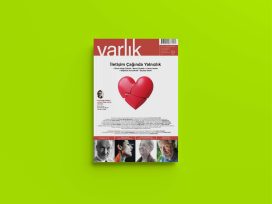
 If a metaphor literally carries over or transfers, where does a film carry or even derail one to? Why is it so supple in its penetration of other medias, in its effect on our customs of how to experience, how to show or seem like something?
If a metaphor literally carries over or transfers, where does a film carry or even derail one to? Why is it so supple in its penetration of other medias, in its effect on our customs of how to experience, how to show or seem like something?

